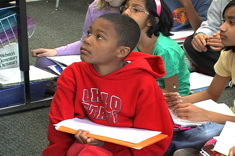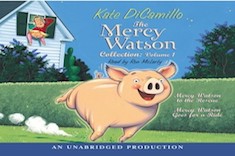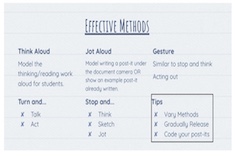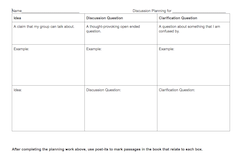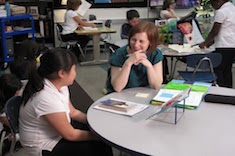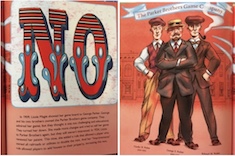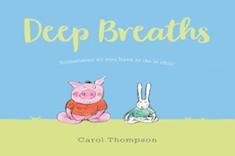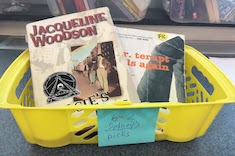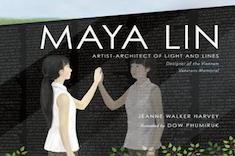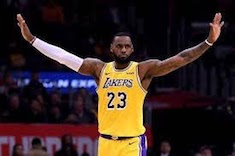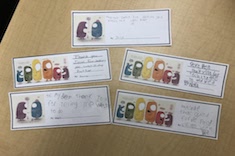Articles
Here is where you’ll find all the latest print features from our contributors. If you’d like to browse specifically by grade level, topic, or contributor, you can use the links in the right sidebar.
Latest Content
It’s Not Wrong. It’s Almost Right.
Melanie Quinn reconsiders how she teaches spelling in her fourth-grade classroom, establishing a new whiteboard routine.
Using Humor to Teach Language Standards
Teaching parts of speech is viewed as dreary work for most teachers. Melanie Meehan shares how you can infuse some fun into it with a little bit of humor.
Supporting Students as They Exit Intervention with Series Books
Tara Barnett and Kate Mills write about the power of series books in helping young readers build skills and independence as they exit intervention programs.
Engaging Students with Humor
Mark Levine finds humor is the “secret sauce” in engaging middle school students and including introverts in the classroom community.
Read Alouds in Content Classes
Mark Levine explains the many ways read alouds can enhance and deepen learning for middle school students in content areas like social studies and science.
Digital Interactive Read Alouds
Tara Barnett and Kate Mills share everything from useful prompts to the best tech tools for moving interactive read alouds to digital platforms during remote instruction.
Issues Overload
Shari Frost finds that the issues students may be dealing with in some children’s books can be overwhelming. She shares some of her favorite books for grappling with one troubling topic at a time.
Changing How I Teach Small Groups
Tammy Mulligan listens to students and adapts her small-group instruction as they share how they learn.
Learning Standards: No Best Way
Jen Schwanke provides some critical questions for teachers to ask when they are interpreting a standard and bringing it to life with students.
Data That We Can Trust
Matt Renwick finds the data closest to the students we serve is more helpful to teachers than many benchmarks or screener scores.
Preparing for Book Club Discussions
Tara Barnett and Kate Mills find that book clubs succeed when students are given thoughtful tools to prepare for them.
See Your Students
Shari Frost explains why the simple act of “seeing” students can have such a potent effect in building a community of learners.
Using Picture Books for Rhetorical Analysis
Gretchen Schroeder finds that picture books are the perfect tool for rhetorical analysis with her high school students.
Picture Books for Mental Wellness
Mandy Robek learns a lot about worry from her daughter, and discovers a treasure trove of picture books to promote mental wellness and help students cope with difficult emotions.
Choice in Literacy Workshops
What makes choice authentic in literacy workshops? Christy Rush-Levine grapples with this tough question that leads to changes in her instruction.
Nurturing Independent Reading Lives in Middle School
Tara Barnett and Kate Mills share their favorite strategies for building a classroom community of readers where everyone has several options for choosing their next book.
Fostering Cultural Awareness Through Book Clubs
Gretchen Schroeder’s students are almost all white and live in a rural community. She finds book clubs are a wonderful tool for expanding cultural awareness.
Meet Someone New Monday: Using Picture Book Biographies to Bring Marginalized Voices into the Classroom
Melissa Quimby creates “Meet Someone New Monday” to inspire students with picture book biographies of little-known artists, activists, and citizens who accomplish remarkable feats.
Flipping Literature Discussions
Gretchen Schroeder realizes her experiences from decades ago as a student are clouding her perspective on “flipped” literature discussions. Once she gets over her biases, she finds that online discussion of literature is a powerful equalizer for student voices.
Building Online Writing Groups
Leigh Anne Eck lists critical questions teachers might ask themselves as they build online writing communities where everyone is comfortable giving and receiving feedback.
Using Photographs in Remote Learning Communities
Bitsy Parks shares how she and her first-grade students used photography to bridge the distance between home and school this spring, learning lessons she is using this fall in remote learning contexts.
Three Things Digital Tools Have Taught Me About Feedback
Christy Rush-Levine discovers that a move to digital feedback reveals many important truths about her middle school students, including insights into the effect of grades on how learners view response to their work.
Sustaining (Not Just Building) Community Online
Poetry Resources for Remote Learning
Poetry can be the glue that holds many virtual classroom communities together. It works for quick morning meeting openings, transitions, or even a bit of laughter when energy is flagging. Cathy Mere shares her favorite poetry resources for remote learning.
Fact or Fiction?
Suzy Kaback works with students to create a “fact or fiction” class book to explore the boundaries between truth and fantasy.
Letting Students Organize Informational Books
Mandy Robek is a little nervous about setting her students loose to organize informational texts, but she couldn’t be more pleased by what they learn in the process.
Routines for Building Gratitude
Bitsy Parks finds even the dreariest days in her first-grade classroom are infinitely more enjoyable because she’s built in routines for expressing gratitude.
Management and Middle School Workshops
Christy Rush-Levine lowers the tension level in her class over management issues by moving from irritation to curiosity, using her “inner chimpanzee” voice.
Lessons and Minilessons: What’s the Difference?
What’s the difference between a lesson and a minilesson? Christy Rush-Levine finds that flexibility is just as important as length in making minilessons work well.
Varying Workshop Structures to Meet Student Needs
Tara Barnett and Kate Mills give guidance and support for varying the structures and routines in literacy workshops.
Browse Content By
Type
Category
- Assessment Tools
- Big Fresh Archives
- Booklists
- Choice Numeracy
- Classroom Design
- Common Core
- Community Building
- Conferring
- Content Literacy
- Digital Literacy
- English Language Learners
- Equity
- Family Relations
- Free Samples
- Guiding Groups
- Leadership
- Literacy Coaches
- Mentor Texts
- Minilessons
- New Teacher Mentors
- Podcasts
- Poetry
- Quote Collections
- Reading Strategies
- Self Care
- Struggling and Striving Learners
- Talking and Listening
- Teacher Study Groups
- Teaching Reading
- Teaching Writing
- Word Study and Vocabulary
Author
- Melissa Quimby
- Nawal Qarooni
- Gwen Blumberg
- Julie Cox
- The Lead Learners
- Hannah Tills
- Josie Stewart
- Ruth Metcalfe
- Mallory Messenger
- Becca Burk
- Jodie Bailey
- Vivian Chen
- Mary Brower
- Tiffany Abbott Fuller
- Stephanie Affinito
- Ruth Ayres
- Leigh Anne Eck
- Heather Fisher
- Shari Frost
- Julie Johnson
- Suzy Kaback
- Gigi McAllister
- Shirl McPhillips
- Melanie Meehan
- Cathy Mere
- Debbie Miller
- Tara Barnett and Kate Mills
- Tammy Mulligan
- Dana Murphy
- Bitsy Parks
- David Pittman
- Brenda Power
- Heather Rader
- Matt Renwick
- Mandy Robek
- Christy Rush-Levine
- Gretchen Schroeder
- Jen Schwanke
- Brian Sepe
- Katherine Sokolowski
- Stella Villalba
- Jennifer Vincent
Grade Level
Choice Literacy Membership
Articles
Get full access to all Choice Literacy article content
Videos
Get full access to all Choice Literacy video content
Courses
Access Choice Literacy course curriculum and training

